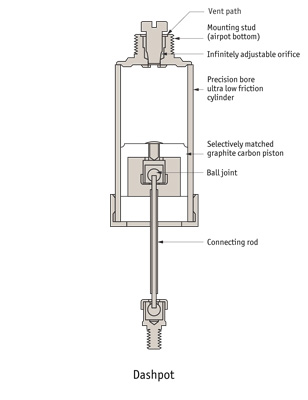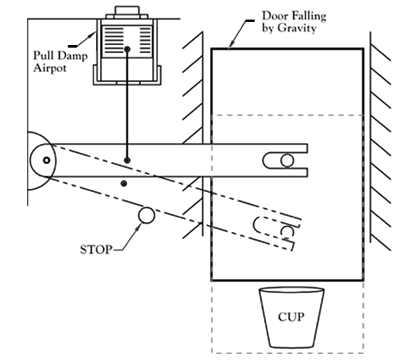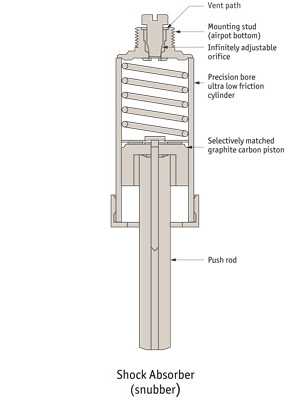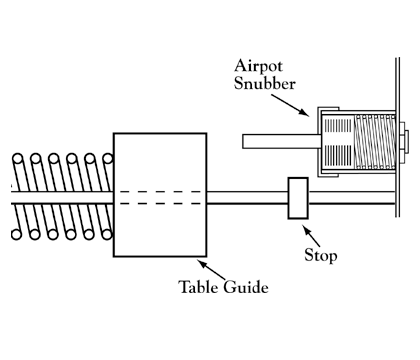Dashpots and snubbers are two types of pneumatic device used for controlling the movement of a load — typically for the purpose of controlled deceleration or motion damping. Although they can be used to control rotary motion, the more common uses for dashpots and snubbers in industrial applications involve the control of linear motion mechanisms, such as solenoids or spring-loaded devices.
Both dashpots and snubbers contain two primary parts: a glass cylinder with a polished bore and a precision piston, often made of a low-friction material such as graphite. And both devices operate by forcing ambient air through an adjustable orifice at a controlled rate. But despite these similarities, dashpots and snubbers are designed for different applications. Case in point — a dashpot is best for applications that require accurately controlled force or velocity, whereas a snubber is best used for end-of-stroke damping where accurate control of impact is required.
Dashpots

A dashpot has a connecting rod that joins the load to the piston and provides control throughout the stroke, either by extending the connecting rod and piston (“pull” mode) or by causing the connecting rod and piston to retract into the cylinder (“push” mode). Dashpots can also control motion in both directions.
Both operating modes — push and pull — rely on the change in air pressure inside the cylinder. In push mode, as the piston moves farther into the cylinder, the air inside the cylinder is compressed, causing the pressure to rise. In pull mode, as the piston retracts out of the cylinder, the pressure inside the cylinder falls and creates a partial vacuum.
Dashpots in “pull” mode work best when the movement needs to be controlled for the entire stroke. This is because the air column is short when the motion begins and the damping force increases quickly, providing controlled motion after just a short amount of travel. It’s also important that a dashpot used in “pull” mode is returned to the starting position — otherwise, if the piston isn’t fully retracted, the air column inside the cylinder will be relatively long and the damping force will be slow to increase.

Image credit: Airpot Corp.
A dashpot in “push” mode works best for applications that require a reduced impact at the end of travel. In this mode, the pressure inside the cylinder rises as the column of air becomes shorter. With push damping, the damping effect is lower at the beginning of the movement. This is because the column of air is relatively long and requires some amount of movement to create sufficient pressure to provide damping. With “push” damping, there can be a noticeable effect of the load “bouncing” on the air column (sometimes referred to as an “air spring”) mid-way through the stroke, as the pressure rises and begins to dampen the movement.
Snubbers

Also referred to as pneumatic shock absorbers, snubbers differ from dashpots in two ways: The piston is not attached to the load being controlled, and damping occurs in compression only (i.e. push damping).
When the load contacts the piston rod of a snubber, the force of the load causes the piston to move, compressing the air inside the cylinder. This compression of air provides a controlled deceleration, with the amount of deceleration depending on the magnitude and speed of the load and the adjustment of the orifice.
If the damping is too high, the load will bounce on the air column (air spring effect) or bounce on landing. If the damping is too low, the load will land with too much force, causing damage to it or to other equipment. Although snubbers provide only compression damping, their accuracy in controlling movement and reducing shock is better than that of dashpots.

Image credit: Airpot Corp.
Feature image credit: Airpot Corp.







Leave a Reply
You must be logged in to post a comment.